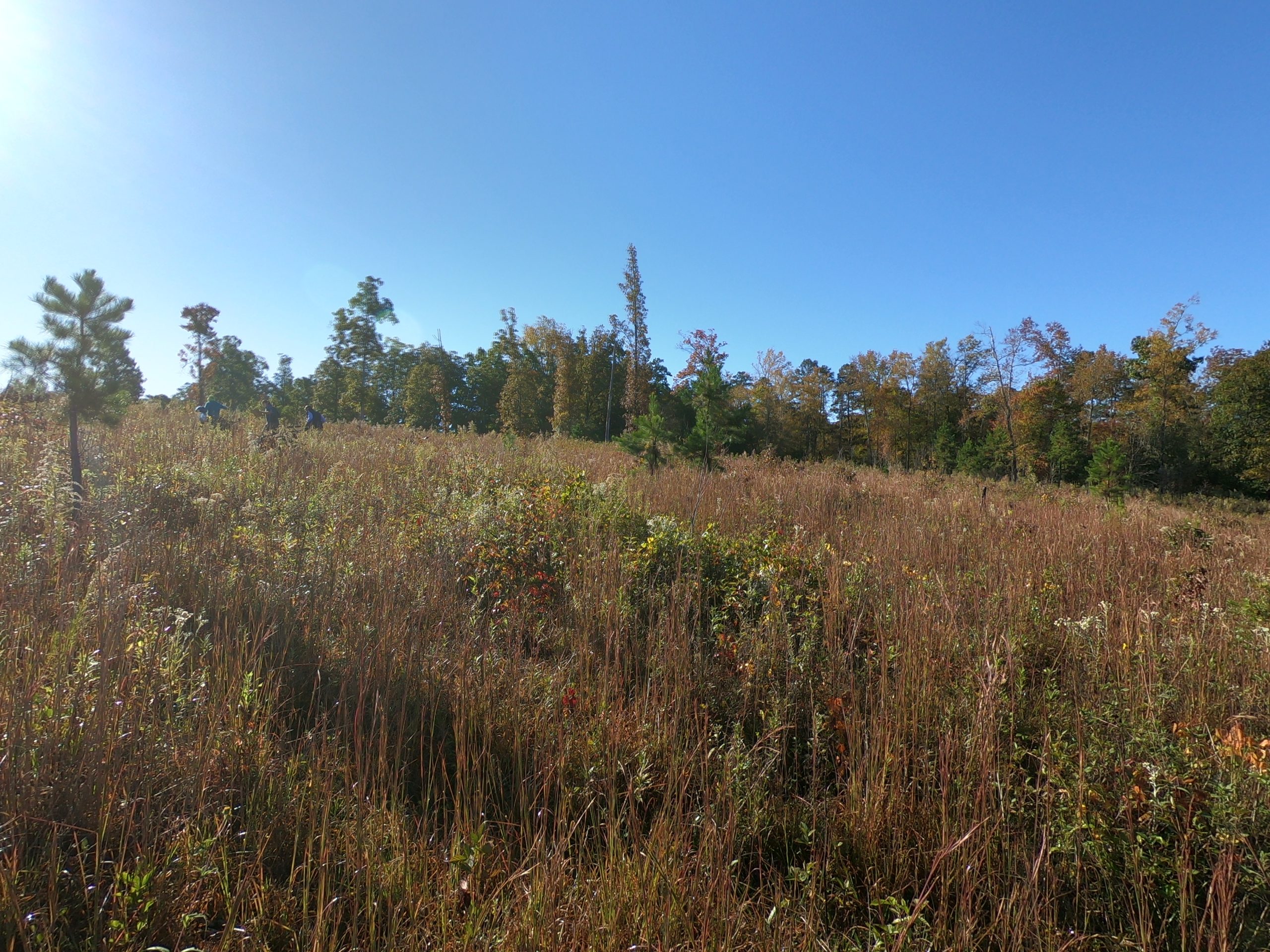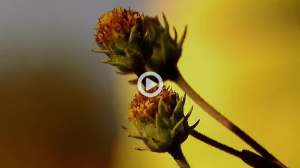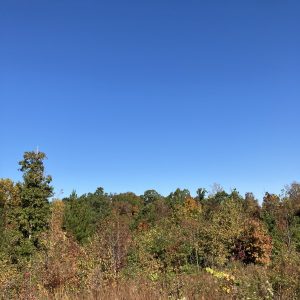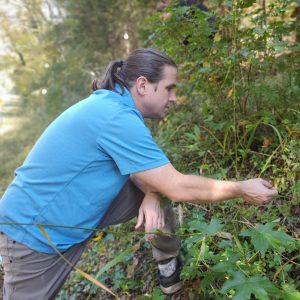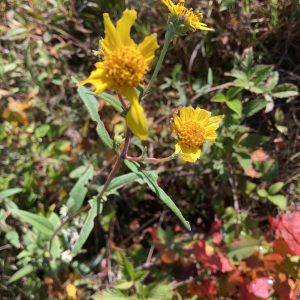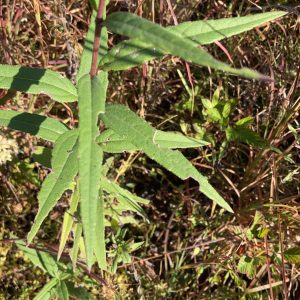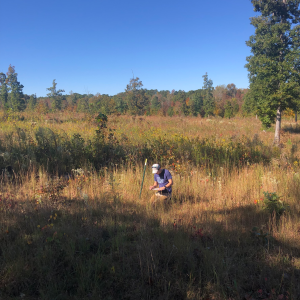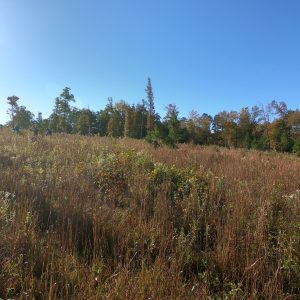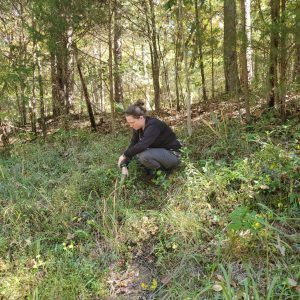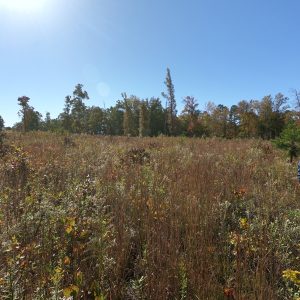
Our Fall 2022 newsletter has arrived!
October 4, 2022
Our Spring Newsletter and 2022 Annual Report are here!
March 1, 2023In the fall of 2021 we planted 800 endangered Schweinitz’s sunflower seedlings at Buffalo Creek Preserve, establishing the first recovery site for the plant in North Carolina. One year later, our team returned to each of the sites to count sunflowers and evaluate survivorship.
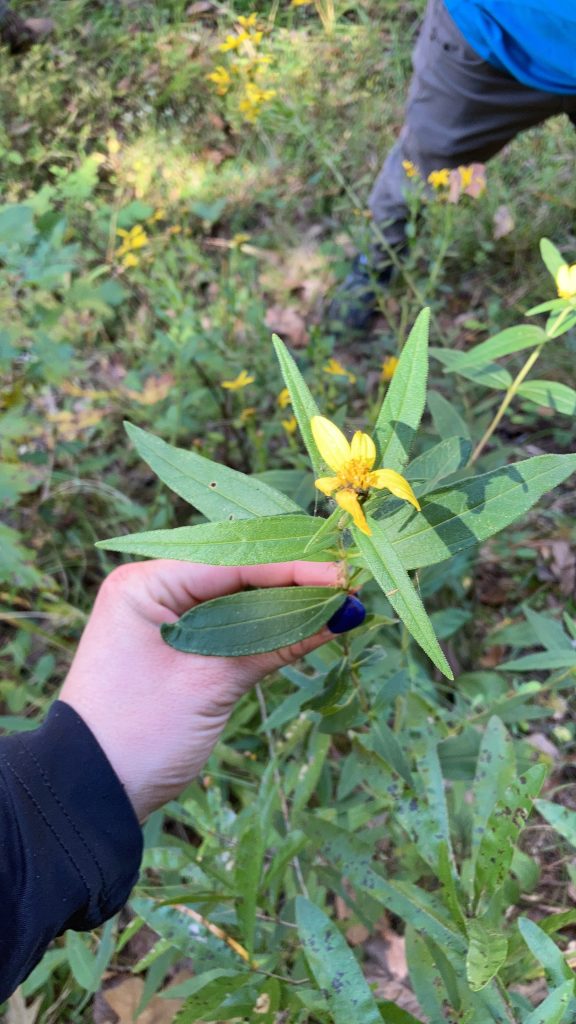
Schweinitz’s sunflower isn’t the typical sunflower you would think of, with a large flower and dark center, thick stem and heart shaped leaves. It has small yellow flowers, about 2-3 inches across, with 15-20 flowers on a single plant. Stems are thin and spindly, but can grow up to 7-8 feet in height, given time and appropriate growing conditions. The stem is also recognizable by its reddish-purple color. Leaves are thick, almost succulent and feel like a cat’s tongue on top, with a velvety underside.
Surviving where others cannot
Despite its delicate appearance, the plant is a survivor. Schweinitz’s are often found in rocky, dry soil with full sun exposure, an environment not appealing to many plants. This hardiness has allowed the flowers to cling life along roadsides and utility corridors over the years, despite heavy habitat loss. It’s also why our team believes that the savanna habitat at Buffalo Creek Preserve is a location where the sunflowers can thrive.
But is that the environment they prefer, or merely the only spot they’ve been allowed to survive? Our team wanted to see if the sunflower would do better or worse in different conditions. We planted seedlings in multiple plots to evaluate success under a variety of environmental conditions. Differences in sunlight, soil conditions and water were all taken into consideration when identifying plots.
one year later
Our team recently visited each of these plots, walked the transects where seedlings had been planted and counted every sunflower we could find. While we’re still evaluating data, we were pleased to find a number of plants had survived the year. We found plants in all of the plots, but there were visible differences in success between them. Surprisingly, slightly locations had the highest success, indicating that the flowers can actually thrive in habitat that receives some shade. Many sunflowers counted also showed evidence of flowering, indicating reproduction (seed production). We expect the plants to grow and spread each year until a strong population is established.
Check out some of the photos from the sunflower survey below or view WBTV’s coverage.
Establishing this recovery site is just one piece of a larger effort to bring back Carolina Piedmont grasslands, an ecosystem that has largely been lost over time. Learn more about our Catawba Grasslands Project here, and stay tuned for future updates on the Schweinitz’s sunflowers at Buffalo Creek Preserve!
The Catawba Grasslands Project is supported by

- DCIM100GOPROGOPR2501.JPG

